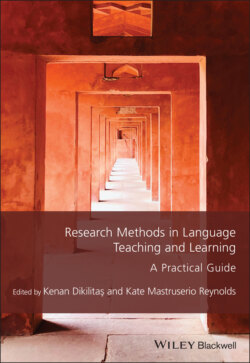Читать книгу Research Methods in Language Teaching and Learning - Группа авторов - Страница 33
Designing the Diaries: Questions and Possibilities
ОглавлениеWe have already noted that there is no “optimal” or fixed format for ethnographic diaries, and thus, as Blommaert and Jie (2010, p. 10) note, “the process of gathering and molding knowledge is part of that knowledge; knowledge construction is knowledge; the process is the product” (original emphasis). I was thus very aware that the way in which the diaries in my study were designed, as data collection tools, would affect the resultant data and subsequent analysis. Unlike personal diaries that many people keep in order to keep a “life-record” of their experiences, thoughts, and feelings, the diaries that my project’s participants would keep were “solicited,” that is, they were kept at my request and in the knowledge that I would read and analyze what was recorded. At the outset, therefore, I needed to consider, for example, how the diarists would deal with moments of embarrassment and difficulty in their accounts, how would they be truly open and honest, and how would they avoid simply pleasing the reader? Like most researchers engaged in diary studies, I needed to provide participants with guidelines in order to minimize the difficulties around these kinds of issues. Clearly, however, the provision of any guidelines, in addition to the diarists’ own knowledge that their accounts would be read, meant that their diaries had to be regarded as co-constructions by myself as the researcher and the participants as diarists (see also, Mackrill, 2008). A fundamental question when reflecting on the project, therefore, is “how did my research design affect the data?” (Hall, 2008, p. 119), and it is to this that the chapter now turns.
